MSI B360M Mortar Review
MSI B360M Mortar - Small in Size, Big in Performance
Last Year in 2017 Intel dropped their latest consumer grade CPU lineup by the name of Coffee Lake which happened to be their first ever six core processors for the consumer lineup which was earlier restricted to only four cores. Being an answer to the AMD Ryzen CPUs which are processing juggernauts in their own rights the Coffee Lake CPUs suffered from one major flaw, they only support the newer chipset motherboards with no backward compatibility to the last generation LGA1151 motherboards restricting users to the then and now expensive Z370 PCH motherboards making Coffee Lake sensible for those who wish to buy the upper segment K series processors.
Now since the AMD Ryzen G series APUs are out Intel wisely released two new chipsets for their current Coffee Lake lineup namely as the B360 and H370 giving the budget CPUs of the lineup a new lease on life!
While the difference between the H370 and B360 chipset is nominal the with just a few USB ports more in the H370 than the B360 the main difference is in terms of the PCIe lanes which are 24 in Z370, 20 in H370 and only 12 in B360 making the B360 the ultimate choice for gamers on budget who desire a basic gaming PC with one graphics card only.
Alright so that was some insight into the past and present of Coffee Lake for you now moving ahead, today thanks to MSI India I have with me their latest offering in the B360 chipset lineup in form of the MSI B360M Mortar motherboard which happens to be our second B360 under the lens so far and our first ever mITX motherboard across every possible platform till date! Priced in at $99 or Rs 9,700 in India the B360M Mortar is pretty sleek and feature rich for the price featuring dual M.2 ports, extended heatsink for better cooling, Military Class IV components and Mystic LED support to go well with all that.
Packing and Accessories
MSI brings the B360M Mortar in a solid and slim grey cardboard box which looks like a armored briefcase to go with the theme of the product. The product name, MSI logo and an abstract Mortar is neatly printed on top and the Arsenal Gaming logo is at the center of the bottom end.
At the back we have all the features nicely printed in their graphical format along with a product image and labeled diagram of the IO panel and its ports. Overall the packing is to the point and informative enough with enough protection to the contents inside.
Inside the box under a tray we find all the accessories which are generous in number, we have the installation manual for the CPU, instruction manual for the motherboard, driver DVD, a Thank You note, stand offs and M.2 SSD screws, two non-braided SATA cables, IO shield and a MSI decal. For a motherboard of this stature these accessories are sufficient and enough to get you started immediately.
A Closer Look
The MSI B360M Mortar obviously being a mITX is smaller than what we are used to here but I must admit that MSI did a great job at how they've designed it through making it perfect for the name it comes with and the Arsenal branding to which it belongs.
The motherboard is primarily black with military themed grey laced all over the heatsinks, both the VRM and PCH ones. The heatsinks are massive especially the extended one on the IO panel side with a Mortar brnading on top while the PCH heatsink is atrociously small! The PCB has abstract markings and decorations to give it a feel of a military motif which is quite interesting. As a whole this motherboard is true to its branding atleast in terms of outer appearance which is great.
At the back of the motherboard we don't have anything special and even on the logos and branding end we just have the AMD CrossFire Logo which the motherboard ofcourse supports.
For the IO panel we have four USB 2.0 and one USB 3.1 ports, one USB
Type-C port, LAN port, gold plated 7.1 channel audio ports, one PS2 port, a
DVI port, display port and an HDMI port.
Resolutions up to 1920×1200 at 60Hz are supported on the single-link
DVI-D port, while HDMI offers 4K at a low refresh rate or lower
resolutions (such as 1080P) at 60Hz.
The CPU are is quite clean even though the motherboard is a mITX but due to the low profile of the heatsinks used beefy air coolers can be used here including those of Noctua which I don't expect anyone to use here as they'll hide half of the motherboard easily but still juts in case one wants to.
Socket over here is obviously the LGA1151 which supports all the Coffee
Lake CPUs till date including the locked and unlocked K series. The
motherboard doesn't support overclocking so sticking to a locked CPU is
what you should be doing here even though it supports K series CPUs
since you can't overclock them.
The MSI B360M Mortar comes with four DIMM slots that are non
reinforced and support RAM upto a maximum capacity of 64GB working at
2667Mhz which is the norm from Intel on these motherboards so if you
plug in a memory rated higher than that it would still be locked at
2667Mhz which is hurting but then its Intel's guidelines and no
motherboard manufacturer can do anything about it. Along side the 24-pin ATX power connector are the EZ Debug LED lights to help with troubleshooting and stuff.
Four SATA III ports are provided here out of which two are vertical and
two are horizontal which is great fro cable management. None of them
support RAID which is fine with me for this category and all these can
work when all four are populated which is a good thing as multiple SATA
devices is common these days.
Turn your gaze towards the PCIe slot areas now and we see that the motherboard has two full size PCIex16 slots, two smaller PCIex1 slots and two M.2 ports all of which are rated Gen 3.0. The top PCIe 3.0x16 slot is reinforced, wired directly to the CPU and can support a full sized graphics card working at x16 while the bottom full sizes PCIe 3.0 slot is x4 only and shares its bandwidth with the second M.2 PCIex4 slot which is PCIe drive exclusive hence if populated the bottom PCIe slot would be disabled. The top M.2 port is PCIe 3.0x4 and can support SATA drives to but when using a SATA drive here you'll compromise one SATA port so be sure to check the manual first to avoid any confusion or hassle.
Overall the PCIe lanes are well implemented here without any major drawbacks that I see one can face while using this motherbord if build a fast gaming system using one graphics card and a bunch of SATA and a NVMe storage. My only gripe is that the top M.2 slot doesn't come with a M.2 shield which could've been added in this price tag adding both functionality and aesthetics.
Since the B360M Mortar is quite feature rich but also a near $100
motherboard a few cost cutting features are bound to brought into
effect, the most prominent being the use of the Realtek ALC892 audio
codec over the more conventional ALC1220 which is not that good when
powering larger speakers over the latter but works flawlessly if not
better when paired with gaming headsets.
The power delivery system here is a 4+2 phase both for the CPU vCore and the iGPU rails which are channeled through a Richtek RT3607C chip that allocated four channels to the CPU power delivery while two channels for the iGPU inside. An arrangement such as this when cooled by ceramic heatsinks is enough for a motherboard which doesn't support overclocking and will ensure stable performance using CPUs as such.
Among all the chips present on the motherboard a few are noticeable such as the Intel i219v for the LAN functionalities, the use of two ASMedia ASM1480 to switch the PCIe 3.0x4 lanes between the bottom full sized PCIe slot and the second M.2 slot.
BIOS and Bundled Software
BIOS Overview
UEFI BIOS is getting more and more common with each manufacturer opting for it due to its simple and flexible interface along with the option to navigate via a mouse rather than a keyboard exclusive BIOS. MSI is no different and has offered not one but two versions of BIOS, EZ and Advanced versions, with the MSI B360M Mortar so as to suit every customer's needs.
On boot up by default you'll be greeted with a more comprehensive and detailed EZ BIOS screen. This is a crammed up screen that has the details about all the components installed on the board along with options laid out neatly under clear tabs on the left side. If you want to change fan speeds, maybe boot devices, or use its automated overclocking function, you can do so quickly and easily.
This is a much preferred version for the beginners and though it comes
with a Game Boost Knob on the top left its useless since the Gaming Plus
doesn't support this feature. The "Memory Try It" feature is present but won't be helpful since its a B360 PCH motherboard the restriction of 2667Mhz is applicable in every way possible.
On pressing the F7 key you'll be teleported into the Advanced BIOS
version or the traditional MSI UEFI BIOS version. This is a version that
all the overclockers will love since the settings are broadly laid out
with tab heading like Over Clocking Settings itself but sadly these won't work here as its a no overclocking motherboard. A plethora of
features are there out of which I'm showing you a selective few.
However there is a bit of an issue with the MSI current BIOS as of now which is related to RAM frequencies about which we'll talk in the next
section.
Bundled Software
This is the era when manufacturers provide customers with not just a
motherboard and utility softwares that act more like blotwares if
nothing else. Gigabyte App center is already what I've reviewed a lot of
time & it has never failed to impress but MSI is no less rather a
bit more refined in their approach.
The heart of the software set is the MSI command set which gives you
general features and information regarding the CPU, GPU, Fan Speed, IGP
and the Game Boost knob...again!
Also one beautiful graphical window is there that provides you with
temperature readings of each component & even tell you where they
are located on the board.
The gaming app section is something that you'll be familiar to if you
are a MSI graphic card owner. It give you all the information and
tweaking options related to your GPU and you can select which vital stat
you want to see on your screen. Also you can adjust mouse sensitivity
and assign hot keys to your gaming mouse from here making it a one stop
solution for gaming.
Another added feature this time is the support of wireless control over
the MSI Command Center which can be achieved via an App for your cell
phone that allows full control over the features of the motherboard
including adjusting voltages and frequencies aswell!
Some extra software include the SteelSeries Engine 3 for Steelseries
gaming accessories, MSI version of CPUZ, XSplit Gamecaster with one year
free subscription etc
Benchmarks and Overclocking
Putting all the components together and booting up into Windows was a
breeze with the MSI B360M Mortar. Everything worked properly out
of
the box which is a very good sign and since MSI had released no new BIOS by the date of review I'll be using the BIOS the motherboard came out of the box. Even though the motherboard features almost no RGB or non-RGB LED with the audio isolation strip being illuminated it looks quite impressive by its sheer looks.
For the benchmarks we used the following test setup configuration --
CPU: Intel Core i5 8600K
Motherboard: MSI B360M Mortar
RAM: Kingston HyperX Predator 16GB DDR4 3000Mhz
Cooler: Cooler Master MasterLiquid Pro 280
Graphics Card: Gigabyte GTX 1050 G1 Gaming OC
Storage: Corsair Neutron GTX 480 480GB
Secondary Storage: ADATA XPG SX8000 256GB M.2 SSD
Power Supply: Cooler Master MasterWatt Lite 700
OS: Windows 10 Pro 64-bit
GPU Driver: ForceWare 375.70
BIOS: 1.0F
Now even though Intel has put a strap of 2667Mhz on the B360 chipset which means no matter how high frequency kit you pair with this platform it would come down to work at 2667Mhz only even with higher frequency XMP profile enabled. Sadly in my case the HyperX Predator kit which comes with two XMP profiles of 2666Mhz and 3000Mhz couldn't work on either and I had to settle for the default 2133Mhz here. This is an issue with the initial BIOS and even MSI had the same issue with its Z370 platform when it first came out with stock factory BIOS but that was fixed with the second BIOS that rolled out so I expect the same for the B360 platform aswell in the days to come but for now we'll settle for the 2133Mhz only along with the Intel i5 8600K working at stock frequency and boost enabled.
AIDA64 Cache & Memory Benchmark
AIDA64 Extreme Edition is a great tool to bench your CPU and RAM in
terms of their read-write-copy abilities. Our i5 8600K showed an
impressive score along with the HyperX Predator kit.
Bear in mind that the MSI B360M Mortar couldn't go past the 2133Mhz mark
on the available BIOS at the time of testing so the results are
accordingly.
AIDA64 GPGPU
The reason for including
this benchmark was to simply observe the AES
and Hash Test which is a determent of how easily your CPU or GPU can
crunch complex calculations and higher score is always regarded better.
We've compared the CPU score over here since I had homogeneous data of
the CPU for all four motherboards.
Cinebench R15
Cinebench uses Maxon's Cinema 4D engine to render a photo-realistic
scene of some shiny balls and weird things (we miss the motorbike). The
scene is highly complex, with reflections, ambient occlusion and
procedural shaders so it gives a CPU a tough workout.
As Cinema 4D is a real-world application - used on films such as
Spider-Man and Star Wars - Cinebench can be viewed as a real-world
benchmark.
wPrime v2.10
wPrime is a leading multithreaded benchmark for x86 processors that
tests your processor performance by calculating square roots with a
recursive call of Newton’s method for estimating functions.
SuperPi Mod 1.5
SuperPi is a simple program that utilizes the processing power and
memory speed of the system to calculate the value of Pi upto 1 Million
or 32 Million decimal point depending upon what you choose. The time is
calculated in minutes and seconds, we'll take them both in seconds, so
lower the score faster is your computer.
3DMark Fire Strike & Time Spy
Fire Strike by 3D Mark is a test suit that plays a cinematic scene to
determine the FPS, GPU temperature and CPU temperature scaling
everything via a cumulative score. It is a great tool to benchmark your
GPU since the render is GPU dependent.
PCMark 10
The latest offering from PCMark is the PCMark 10 and unlike its
predecessor the new suite evaluates the entire system performance
through just one long test, though you can always opt for the quicker
and smaller ones, but the test for modern offices and home is the
perfect replica of what one professional would do in their daily lives.
The performance is evaluated through basic tests like video conferencing
and web browsing to complex tasks such as graphic and video editing or
even rendering through POV Ray!
Rise of the Tomb Raider
The latest installation of Lara Croft in the spectacular Rise of the
Tomb Raider 2016 with stunning graphics and rich location makes it a
great game to benchmark with while enjoying in the due course! We used
DX12 and settings were at Very High on full HD resolution.
Battlefield 1
The latest installation to the Battlefield franchise and mind it the
grandest one of them all aswell, Battlefield 1 is a prequel to the
infamous Battlefield 1942 placing the players right in the middle of
World War 1. Based on the latest Frostbite Engine by EA-DICE,
Battlefield 1 takes advantage of DirectX 12 with asynchronous compute to
weave together richly detailed worlds. It is heavily taxing on
current-generation hardware, and you're handsomely rewarded for
investing more into your graphics setup. Settings are at High preset
with full HD resolution.
CrystalDiskMark 5.0.2
CrystalDiskMark
is a disk benchmark software that analyses different
types of hard drive. Giving sequential benchmark write and read
statistics in MB/s. A simple program that is very useful here, the above
benchmark is for the ADATA SX8000 M.2 SSD and we see the desired speeds
using the MSI B360M Mortar.
My Verdict
The general perception about mITX motherboards has always been a smaller motherboard with cut down features but all that has lately changed and the MSI B360M Mortar is one leading the pack when it comes to the B360 division here. The motherboard is well perceived and designed with unique aesthetics that catches ones eye even when the motherboard is not connected or powered on and the best part is that some of those aesthetics are actually functional such as the extended heatsink on the IO panel side effectively keeping the power delivery system cool even under full load.
The lack of onboard RGB lights on this board is a double edged sword which might please a few while disappoint another few but that's a subjective topic and better left untouched. Implementation of the PCIe lanes on the motherboard is well thought of with two M.2 ports, one PCIe slot and four(three) SATA ports all working at the same time which is more than enough for any gaming PC or HTPC build that one can expect building in this price range. About performance there are no complaints whatsoever as the motherboard performs as expected in every synthetic and real life benchmark placing the B360M Mortar right next to more competition.
BIOS is an issue right now but I'm sure by the time you'll buy this motherboard new BIOS will roll out which will address the memory compatibility issue for sure. One gripe that I have here is that none of the M.2 ports are shielded which should've been an addition here as its inexpensive but adds both looks and functionality.
"The MSI B360M Mortar is physically small and technically strong, offering a great balance of attractive looks, solid performance and to the point pricing making it a force to reckon with. A must have on every gamer's shopping list for building a fast and powerful gaming PC on a budget."
Pros -
- Distinct Looks
- Solid build quality
- Good Performance
- Aptly priced
Cons -
- No M.2 shield
I give it a 8/10 earning our Gold Award!
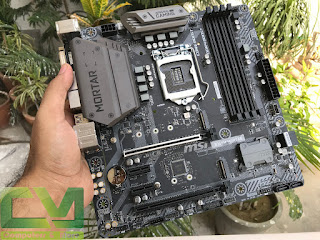


















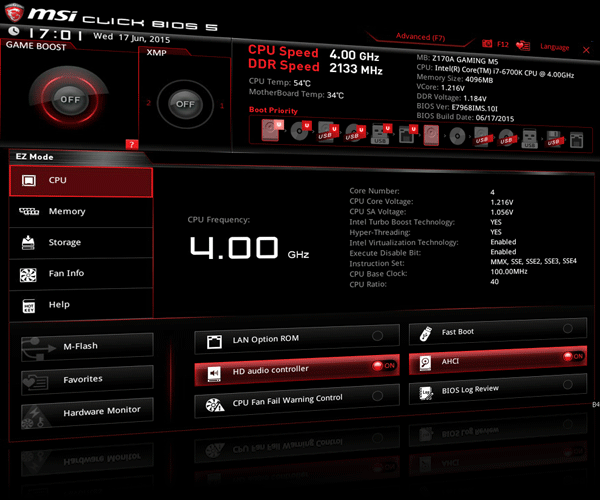



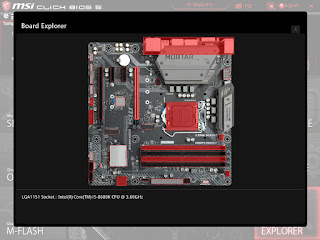














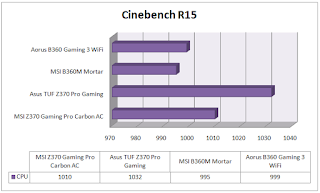
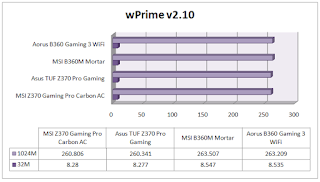










Comments
Post a Comment